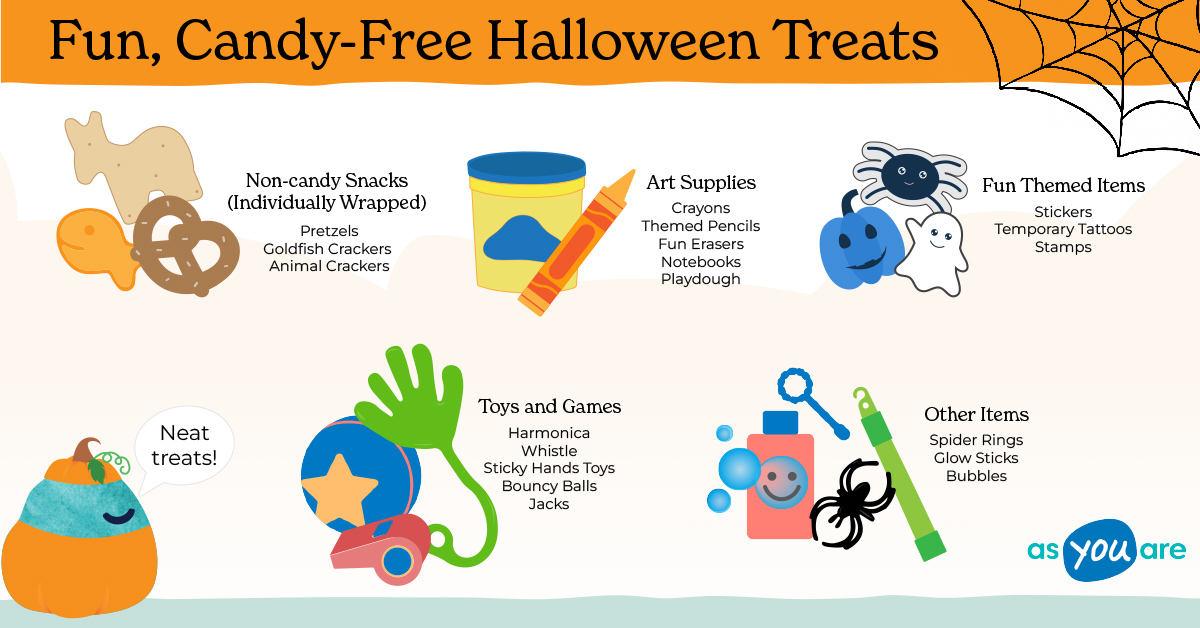By Samantha Sallade, Ph.D.
Dr. Sallade is a certified school psychologist who is experienced in evaluating children for autism and other neurodevelopmental challenges. She is the Director of Clinical Operations of As You Are, a virtual clinic dramatically increasing access to early autism diagnostic services through the use of exclusively telehealth appointments
It is that time of the year again! I have always enjoyed the changing of leaves, cool temperatures, and of course all things Halloween!
As a school psychologist, parents and teachers alike often have concerns regarding the massive influx of processed, sugary candy that seems to come along with every event they attend during the month of October. Another separate, but related, issue is the increase in food allergies: peanuts, tree nuts, soy, and dairy among them. Mass-produced, processed candy can often feel like the only option-with no other alternatives in sight. However with some creativity and teamwork, I have compiled a list of Halloween treats that are sensory and allergy friendly!
Here are a few fun Halloween treat ideas that aren’t candy:
- Non-candy, individually wrapped snacks: pretzels, goldfish crackers, animal crackers
- Individual jars of Play-Doh
- Small sets of crayons
- Small toys or games (jacks, bouncy balls)
- Slimy, sticky hand toys (my crew’s favorite)
- Small instrument, like a plastic mini harmonica or whistle
- Stickers
- Pencils with fun Halloween themes
- Temporary tattoos or stamps
- Erasers
- Tiny notebooks
- Other small, Halloween-themed items, like spider rings
The list of ideas is almost endless – just type “non-candy Halloween treat alternatives” into your favorite search engine, and you’ll see what I mean. And I know what you’re thinking – “my kids will freak!” But I’m here to tell you that a unique and creative candy alternative can be just as exciting as that 100th mini candy bar.
A friendly reminder this Halloween:
One of my favorite things about the month of October is that the weather starts to change, outdoor events pop-up, and gatherings with friends and family increase – bringing people together. You may meet children you’ve never seen before as they come to your door to trick-or-treat. As you do, remember: not every child is neurotypical and not every adult knows about neurodivergent children. There’s likely a reason when a youngster doesn’t make eye contact or doesn’t speak after ringing the doorbell. And an adult that tries to make your child say trick or treat may not be thinking about how difficult that is for some kiddos.. Take a moment to be present, be kind, and be sensitive to everyone you meet on Halloween and throughout the season!
For additional resources, check out some more Notes from the Doc blog articles.



















